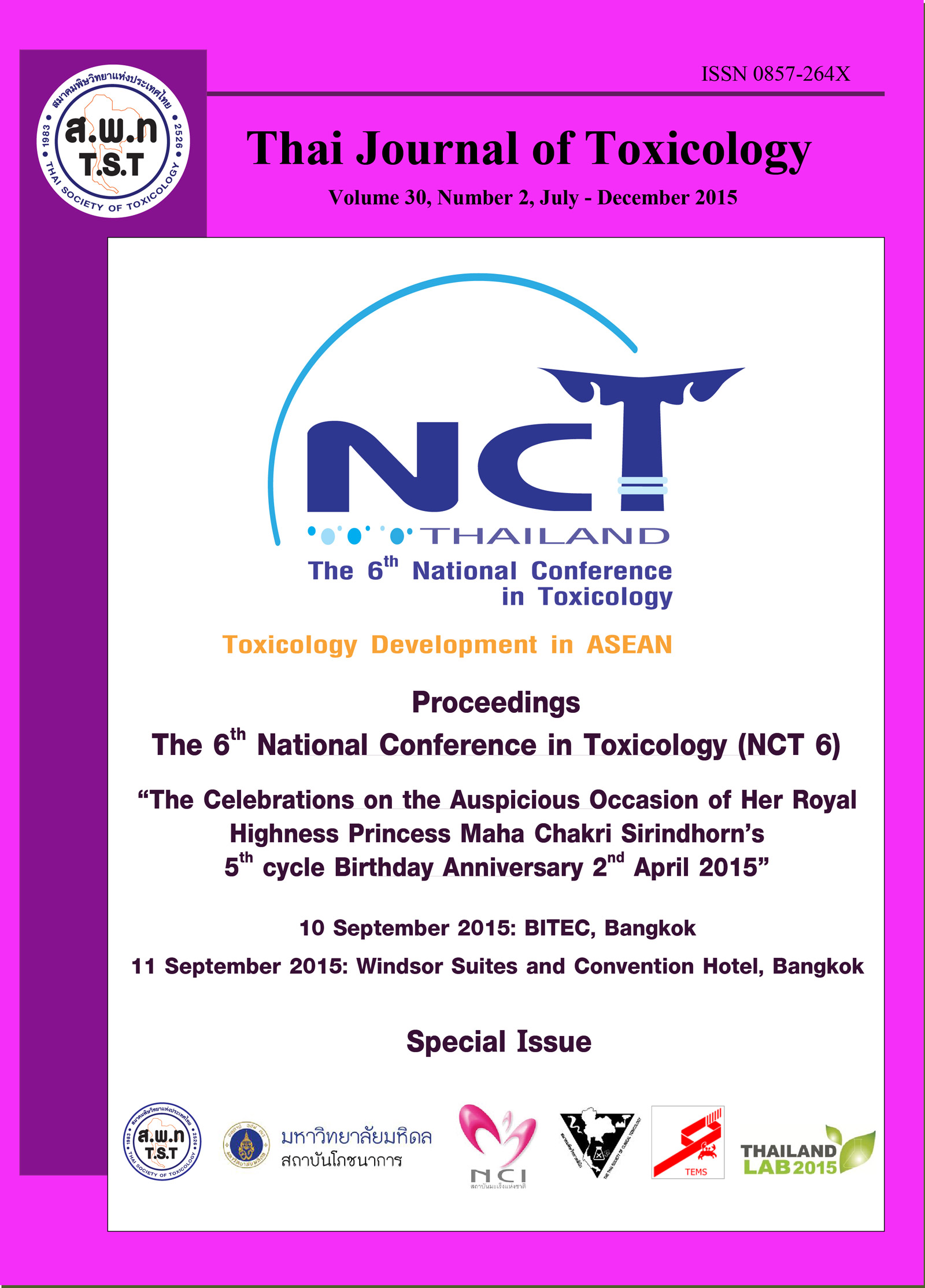Emergency Plan Formulation for Crude Oil Leaking: A Case Study of Crude Oil Transfer on a Central Processing Platform, Gulf of Thailand
Main Article Content
Abstract
The objectives of this research were: 1) to assess the safety of employees working in the transfer of crude oil from the central processing platform to containment vessels in the Gulf of Thailand; 2) to estimate the spreading radius of the crude oil in case of leaking into the sea; 3) to calculate use of oil dispersants with amount in accordance with the leaking emergency; and 4) to formulate a contingency plan in case of oil leaking with safety and containment efficiency. The study was started with survey of 48 officers working in the central processing platform using a questionnaire which analyzed content by the experts regarding understanding of the emergency plan while oil leaking. Calculation of the amount of crude oil leaking was done from oil transfer pipeline of both testing cases of auto valve and manual closes in order to find average time used for these 2 close cases. The highest amount of oil leaking was then calculated before stopping transfer and calculated amount of oil spreading into the sea to control the situation. The amount of crude oil leaking was compared with a degree and a potential threat to the environment in order to formulate a contingency plan in case of oil leaking. The data were analyzed by descriptive analysis. The findings of this study were that: 1) the workers working at the central processing platform had good understanding of an emergency plan in case of oil leaking; 2) the spreading radius of the crude oil in case of leaking into the sea was calculated from the amount of crude oil leaking caused by emergency from pipeline of both testing cases of an auto and manual closing of the valves; 3) the highest amount of oil leaking was calculated as a result of manual of valve closing. The calculation was found that the optimal amount of oil dispersant to control the situation was 43 barrels or 20 : 1 is ratio of oil with dispersant (Corexit 9500) of the highest amount calculated of oil leaking but the central processing platform could reserve only 20% of oil dispersant need for the highest oil spill which was of 8.5 barrels; and 4) the highest amount calculated of oil leaking had a violence at the second level. An emergency plan was formulated as well as steps of oil leaking prevention and the role of officer roles working on the central processing platform. The plan was used as a guideline to improve the preparedness for emergency response and control of the situation. The emergency plan was then presented to the oil experts, who considered that the plan was efficient and could be used in the real emergency situation. The results of this research could be applied by relevant government offices as a guideline for management of emergency crisis of level 2 which is the amount of oil leaks more than 20 tons but not exceeding 1,000 tons according to the criteria of the Prevention and Elimination Plan of Water Pollution from Oil (Water Quality Management Bureau, Department of Pollution Control). The amount of the distribution of oil which cannot be estimated radius oil spilled was actually due to a tidal surge and winds at the sea seasonal changes.The features kind of brought it to the position of leaks and sending it to volume of production.


